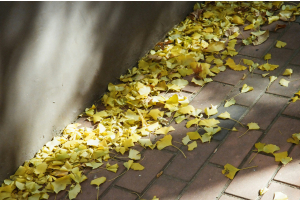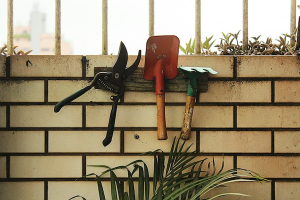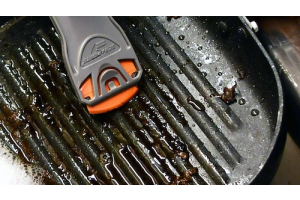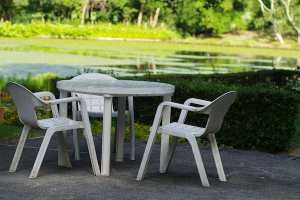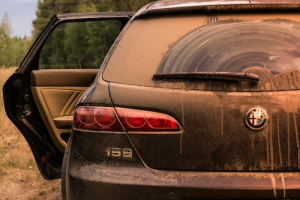Page 2 - Blog
-
- April 21, 2025
Get your RV or camper road-ready with this targeted checklist. Whether you’re heading to the mountains, coast, or your favorite local campground, these key prep steps will help you start the season fresh, without damaging surfaces or wasting time.
Exterior Cleanup
-
☐ Wash the exterior:
Start with a gentle RV-safe soap to remove surface dirt and winter grime. -
☐ Scrape grime from seals and trim:
Use Scraperite orange blades to gently lift stubborn buildup around window seals, storage compartment edges, and door frames. Safe on rubber and paint. -
☐ Inspect and clean roof seams and vents:
Remove dried sap, mildew, and grime buildup using a plastic blade for tight, curved areas. Check for cracks or gaps needing reseal. -
☐ Remove faded decals (if replacing or upgrading):
Warm the area with a hairdryer or heat gun, then use a Scraperite blade to peel away vinyl without scratching gelcoat or fiberglass. -
☐ Remove adhesive residue:
Apply a safe adhesive remover and gently scrape with your plastic blade
-
-
- April 16, 2025
As the days grow longer and the temperatures rise, RV and camper owners start looking ahead to road trips, campground weekends, and summer getaways. But before the fun begins, spring prep is essential—and often a little messy.
For Sarah, getting her RV ready for the season meant tackling a to-do list filled with post-winter grime, stubborn buildup, and cosmetic touch-ups. The seals around her windows and storage compartments had collected layers of dirt and sap. The decals were faded and starting to peel, and a few areas needed resealing where the caulk had cracked or pulled away. She wanted to clean and refresh everything without scratching the RV’s surface or making a bigger mess.
That’s where plastic blades came in.
Cleaning Around Rubber Seals and Trim
One of the most frustrating areas to clean on an RV is around the rubber seals and trim. Over time, these areas collect road grime, tree sap, and even mildew. Traditional brushes and cloths often push dirt into the edges instead of lifting
-
- April 13, 2025
If you own a boat, you know that grime, buildup, and scuffs are just part of the deal. Whether it’s salt crust along the rails, algae at the waterline, or mystery gunk in a tight hatch corner, keeping your vessel clean takes regular effort and the right tools.
Here’s the problem: traditional scrubbing often spreads the mess more than it removes it. You rub and rub, but the real buildup stays stuck, while everything around it gets a good smear. Worse, over-scrubbing can dull finishes, scratch gelcoat, or wear down decals.
That’s where a handheld plastic scraper earns its keep. It’s small, simple, and budget-friendly—but don't underestimate it. This tool lets you target the exact problem spot, applying pressure where it counts without damaging nearby surfaces. No chemicals, no stress, just clean results.
Why Scrubbing Falls Short on a Boat
Marine grime is a different beast. Salt, dead bugs, fish residue, hard water marks, they all love to cling. And many surfaces on a boat are either textured
-
- April 09, 2025
The first hint of warmer weather always brings a familiar thrill to boat owners. For Jim, it marked the countdown to long-awaited days on the water with his family. But like clockwork, it also came with the less glamorous side of boating—spring cleaning.
This year, as Jim pulled into the marina, he was greeted by the usual suspects: stubborn mold patches from winter storage, a dull haze clinging to his fiberglass, and grime wedged around cleats and window seals. In years past, that meant hours of rubbing, scrubbing, and sore arms, with rags and cleaning sprays that never quite got the job done efficiently.
But this spring, Jim tried something different. He’d recently read about using a plastic scraper for boat maintenance—a tool he’d never thought to keep onboard. Lightweight, safe for surfaces, and surprisingly effective, it quickly became the MVP of his spring prep.
Precision Over Pressure: The Power of Targeted Scraping
Like most boaters, Jim used to reach for rags and towels to tackle
-
- February 09, 2025
Removing stickers, labels, and decals is a task that extends across multiple industries, from automotive detailing to construction and retail. While this might seem like a simple process, having the right tools—such as a plastic safety scraper—can make a world of difference. Whether it's a car owner peeling off a dealership sticker or a warehouse worker handling bulk label removal, choosing the right blade and method is key to achieving a clean result without damaging the underlying surface.
Sticker Removal in the Automotive Industry
For car detailers and vehicle owners, removing stickers like dealership logos, inspection tags, or decorative decals is a common need. These stickers, often applied to glass or painted surfaces, can be tricky to remove without causing scratches or damage.
A specialized plastic scraper—such as Scraperite's Pro Magenta Blade—provides a safe alternative to traditional metal blades. Metal blades, while effective, can scratch glass or delicate surfaces.
-
- February 09, 2025
Identifying the Type of Sticker on Commercial Glass
Different adhesives require tailored approaches for effectively cleaning residue from commercial glass. Businesses often use various types of stickers, window clings, and decals for promotional purposes. Here are some common types:
- Vinyl Clings: These are favored for their reusability, adhering to glass through static or water-based methods, allowing for easy removal without leaving residue.
- Glassine Paper Stickers: Designed to remain firmly attached, these stickers can be challenging to remove without specialized solvents.
- Polypropylene Labels: Renowned for their durability and water resistance, these stickers are ideal for long-term applications but may leave behind stubborn adhesive residue.
- Clear Window Decals: Printed on transparent materials, these decals provide an appealing visual effect. The adhesives used can vary, impacting the ease of removal.
- Perforated Window Decals: Featuring small holes for one-way visibility,
-
- February 09, 2025
Below we will explore some of the best ways to use Scraperite plastic scrapers in the kitchen. With the right scraper on hand, you can save time and elbow grease, and avoid damaging your cookware.
1. Removing Stickers from New Kitchenware
Have you ever purchased a new set of glass jars, baking dishes, or a beautiful coffee maker, only to find it covered in stubborn price tags or sticky labels? Fully removing these adhesives without leaving residue or damaging the surface can be a challenge, but with a plastic scraper, it becomes a breeze. Plastic scrapers, like Scraperite's General Purpose Orange, are perfect for this
-
- February 06, 2025
The holiday season is full of gift-giving, but one task many of us dread is removing those stubborn price tags and labels from our carefully chosen presents. Whether you've purchased a new bottle of wine, a decorative item, or a children's toy, removing price tags completely and without damaging the product can be tricky. Don't worry, though—we've got you covered with effective methods to tackle this common problem. Here are four hassle-free ways to use Scraperite's plastic blades to remove price tags.
Method 1: Nail Polish Remover and Rubbing Alcohol
If you're dealing with a sticker that refuses to come off, this method is a reliable solution. Nail polish remover contains acetone, which breaks down adhesives.
Steps:
- Soak a cotton ball, cloth, or paper towel with nail polish remover.
- Place it over the label, letting it sit for a few minutes to allow the remover to penetrate.
- Carefully peel off the label. Use a plastic scraper, like Scraperite's General Purpose Orange, to remove any
